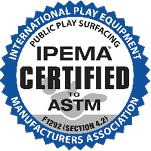Once upon a time, a corporate procurement agent was looking to save money on paper towels, so that buyer purchased the cheapest product available. The trouble was that the new towels were not particularly absorbent. The staff members needed to use more of them to dry their hands than with the previous brand. Those employees were spending extra time in the washroom drying their hands, and their supervisors were getting frustrated. So was the janitor, who found that the trash bin was filling up much faster than in the past.
The procurement of essential supplies, including pallets, plays a pivotal role in the efficiency and resilience of contemporary supply chains. However, despite good intentions, many companies still find their procurement processes hampered by siloed thinking, with departments operating independently, leading to inefficiencies, increased costs, and a lack of cohesion in achieving the company’s strategic objectives. It is the classic case of going for the lowest price even when it proves more costly in the big picture, such as in the case of our paper towel story.
To remain competitive and agile, businesses must adopt a holistic approach to procurement that fosters collaboration and strategic alignment across all departments. This article explores practical strategies for eliminating the silo mentality in procurement processes, ensuring a more integrated, efficient, and effective supply chain.
What Are Organizational Silos?
Organizational silos refer to a situation where departments or groups within a company operate in isolation from one another. This division can be structural but often extends to the culture and mindset, where communication, collaboration, and information sharing between departments are limited.
Silos are problematic because they can lead to inefficiencies, redundancies, and missed opportunities for synergy. When departments do not work together or understand each other’s roles and challenges, it can result in a lack of alignment with the organization’s overall goals, reduced innovation, and decreased ability to respond effectively to market changes. Furthermore, silos can contribute to a fragmented company culture, where teams are more focused on their own success rather than the success of the entire organization, leading to internal competition rather than cooperation.
Fostering Cross-Functional Teams
One of the most effective ways to combat siloed thinking is by establishing cross-functional teams that include procurement, operations, finance, and other relevant department stakeholders.
These teams should oversee the procurement process from a holistic perspective, ensuring that decisions are made with the company’s overall strategy and goals in mind. By involving diverse perspectives in the procurement process, companies can identify and leverage synergies, optimize costs, and ensure that the supplies procured align with the broader organizational objectives.
For example, if eliminating supply chain risk is a front-burner strategic initiative, does it make sense to purchase pallets from several local producers, or does it make sense to source them from a pallet supplier with a national brick-and-mortar presence that can reliably fulfill all your needs? Likewise, does it make sense to source cheaper, low-quality pallets that are more likely to result in injury or product damage? While such an approach might seem logical in the procurement office, it can seem bewildering from the perspective of the plant floor.
Implementing Integrated Procurement Software
Technology can be a powerful enabler in breaking down silos. Integrated procurement software provides a shared platform for managing procurement activities, offering visibility into the entire process across departments. This transparency helps ensure all stakeholders access the same information, facilitating visibility, better communication, and collaboration. Such systems can also automate routine procurement tasks, freeing time for strategic thinking and decision-making.
Aligning Procurement Strategy with Corporate Objectives
To ensure that procurement activities support the overall business strategy, it’s crucial to align the procurement strategy with the company’s long-term goals. This alignment involves setting procurement objectives that contribute to achieving broader business outcomes, such as cost leadership, sustainability, or innovation. Procurement teams should work closely with strategic planning departments to understand the company’s vision and how procurement can support it.
Encouraging a Culture of Communication and Collaboration
Breaking down silos is not only about processes and systems; it’s also about culture. Encouraging a culture that values open communication, collaboration, and shared goals is essential. Regular meetings, team-building activities, and collaborative projects can help build trust and rapport among departments, making it easier to work together towards common objectives. Leadership plays a crucial role in fostering this culture by setting an example and rewarding teamwork and cross-departmental initiatives.
Leveraging Supplier Relationships
Suppliers can provide valuable insights into market trends, innovations, and cost-saving opportunities. By treating suppliers as strategic partners and involving them in planning processes, companies can access this expertise and align procurement practices with market realities. Regarding pallets, do you consistently put out an RFQ and look for the lowest price? If you have yet to review your pallet specification lately, put out an RFP and tap the expertise of your pallet supplier. There might be a better mousetrap!
A partnering approach requires coordination among departments to ensure that supplier relationships are managed effectively and that the insights gained are shared and acted upon across the organization.
Continuous Improvement and Feedback Loops
Finally, adopting a mindset of continuous improvement is vital. Regular reviews of procurement practices, performance metrics, and feedback from all stakeholders can help identify areas for improvement and adjust strategies as needed. These feedback loops should be designed to encourage contributions from across the organization, ensuring that procurement remains aligned with changing business needs and market conditions.
Conclusion
Eliminating siloed thinking in procurement is not an overnight task; it requires a concerted effort to change processes, technologies, and, most importantly, culture. Companies can create a more integrated, strategic procurement function by fostering cross-functional collaboration, aligning procurement strategies with corporate objectives, leveraging technology, and embracing continuous improvement. This holistic approach optimizes costs and efficiencies and positions the organization to better respond to market changes and drive long-term success.
If you are ready to blow up the silos and approach pallet buying strategically, it is time to reach out to PalletOne. Our national sales team and Pallet Concierge service can help you align your pallet approach with your company’s big-picture aspirations.












